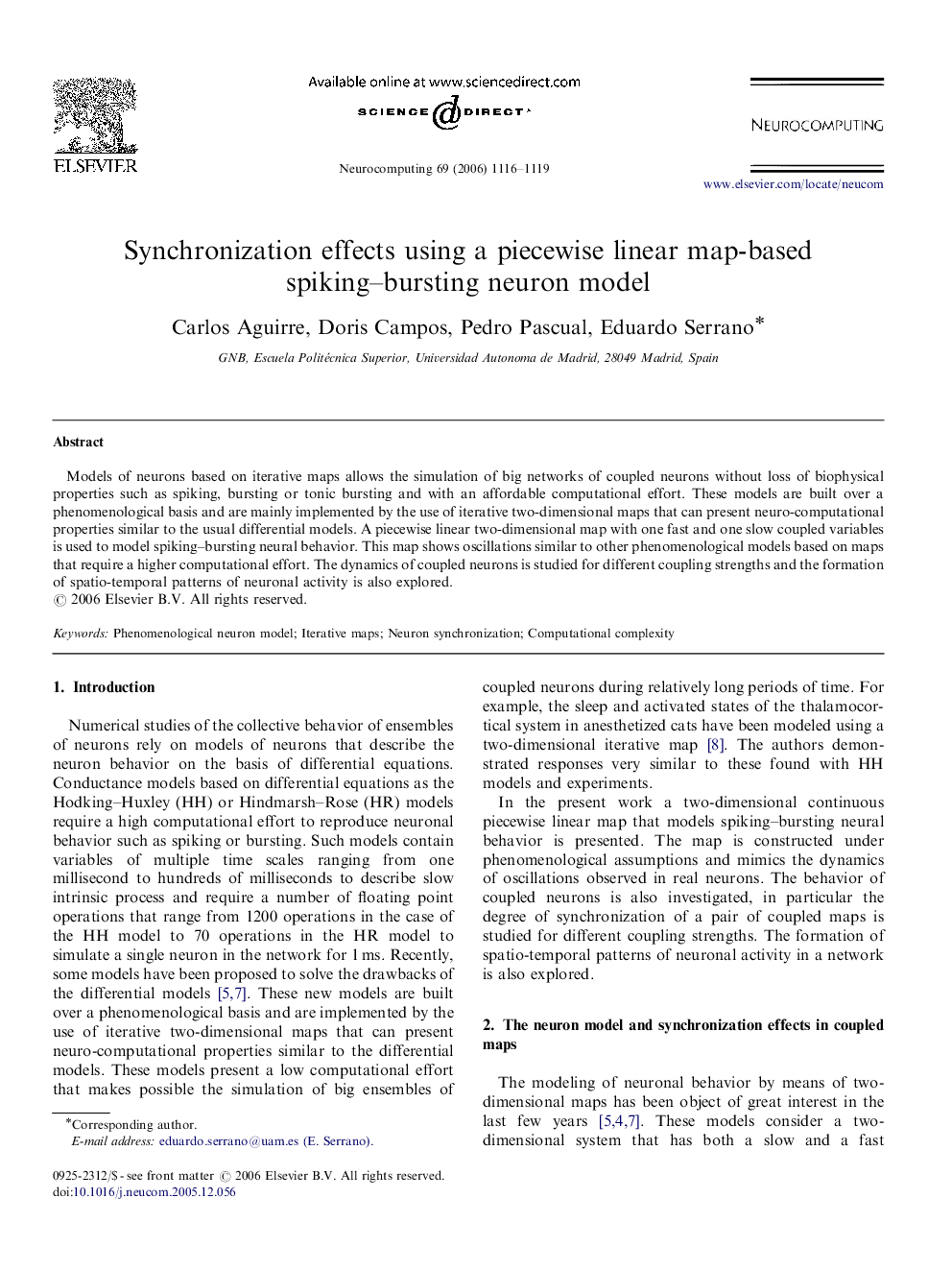| Article ID | Journal | Published Year | Pages | File Type |
|---|---|---|---|---|
| 408721 | Neurocomputing | 2006 | 4 Pages |
Models of neurons based on iterative maps allows the simulation of big networks of coupled neurons without loss of biophysical properties such as spiking, bursting or tonic bursting and with an affordable computational effort. These models are built over a phenomenological basis and are mainly implemented by the use of iterative two-dimensional maps that can present neuro-computational properties similar to the usual differential models. A piecewise linear two-dimensional map with one fast and one slow coupled variables is used to model spiking–bursting neural behavior. This map shows oscillations similar to other phenomenological models based on maps that require a higher computational effort. The dynamics of coupled neurons is studied for different coupling strengths and the formation of spatio-temporal patterns of neuronal activity is also explored.
